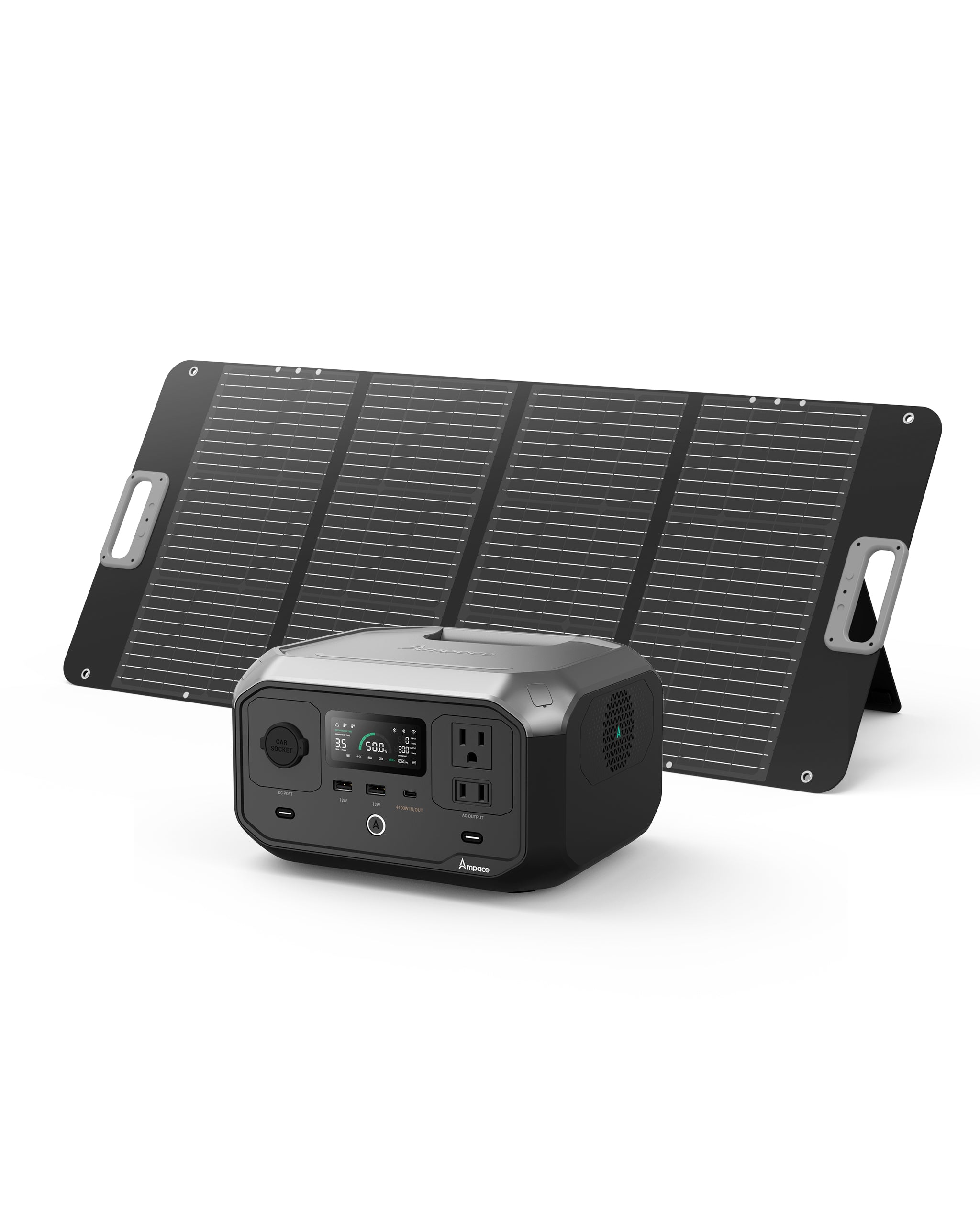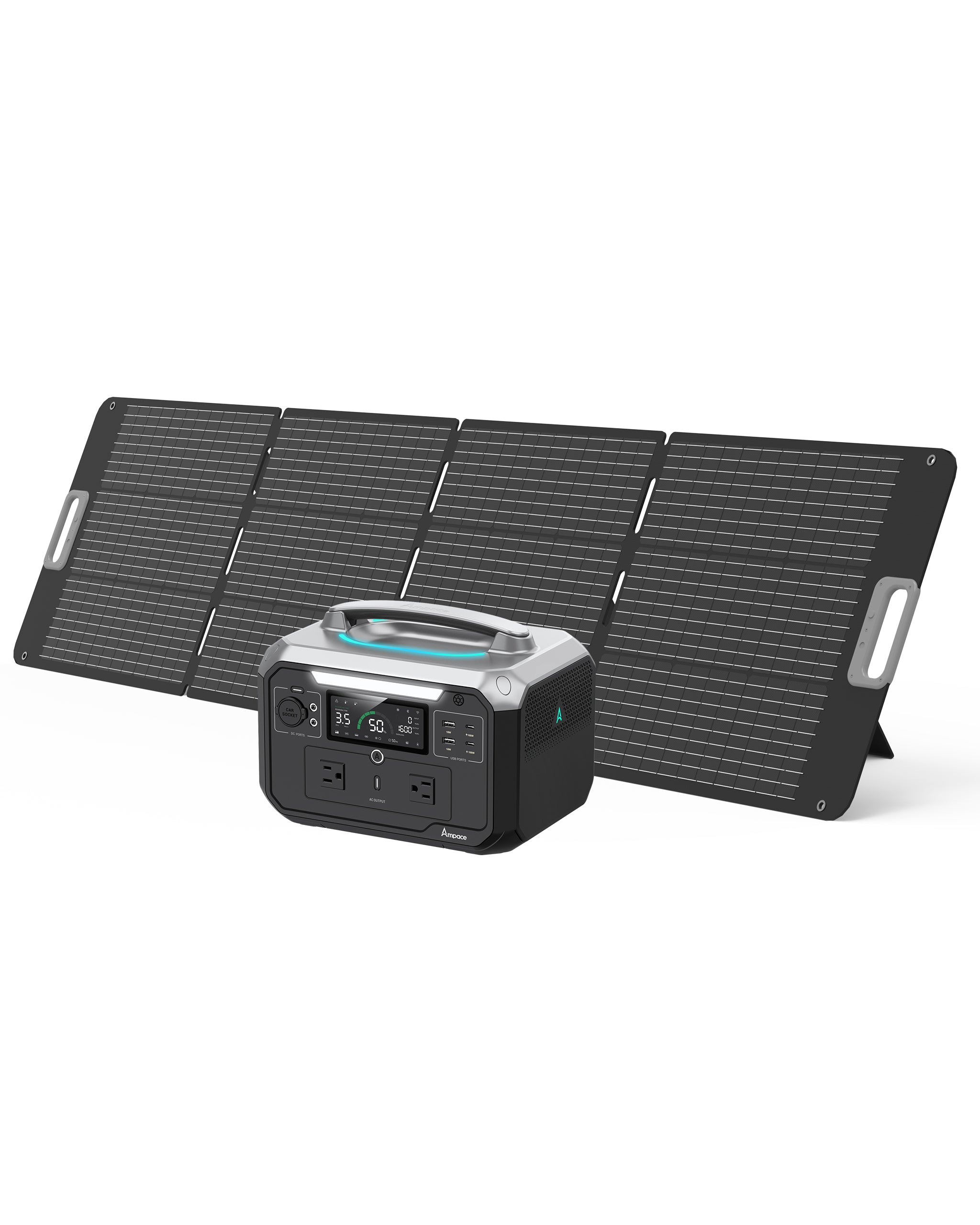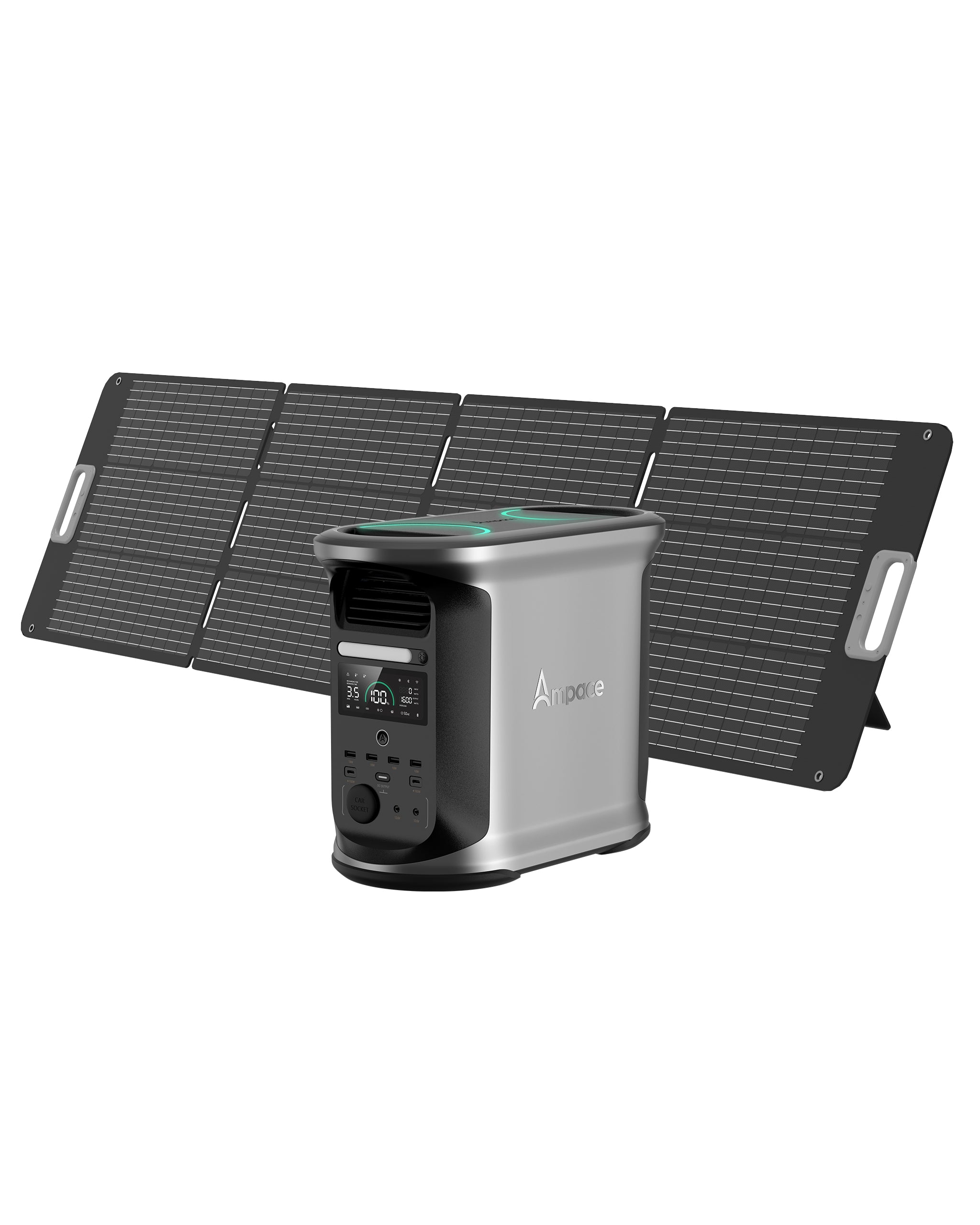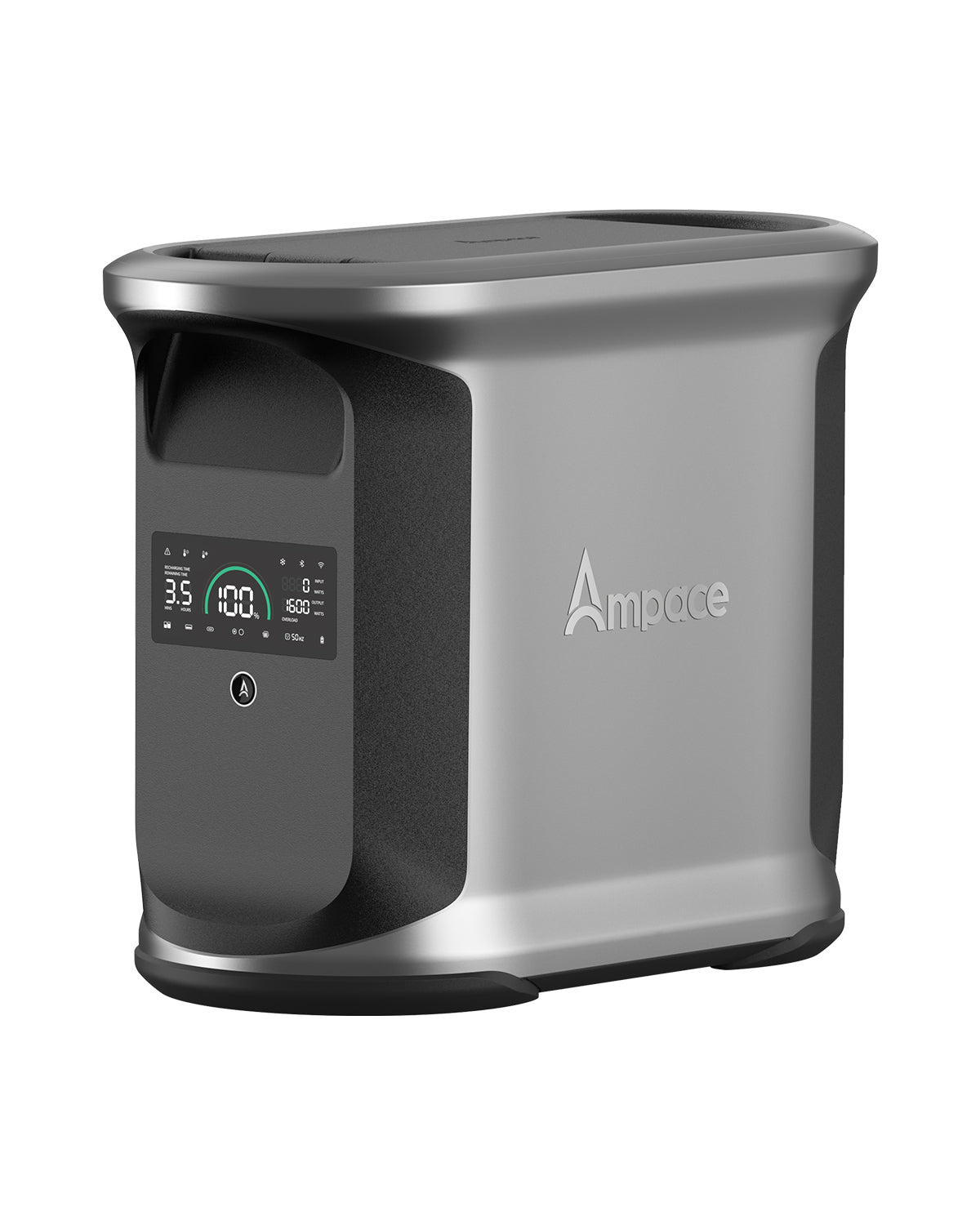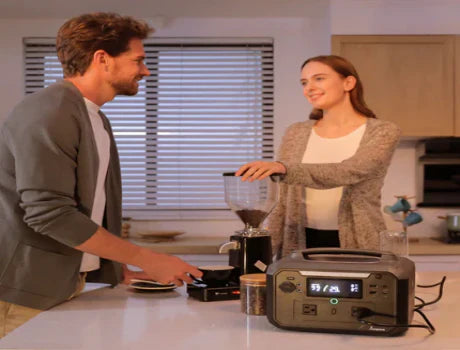Earth Day Home Glow-Up: Sustainable Upgrades for a Greener Home

Table of Contents
Embracing eco-friendly living is not just a trend; it's a smart choice for your wallet and the planet. By making simple renovations, you can reduce your carbon footprint, save money on energy bills, and create a healthier home. How can Ampace Solar Panels and Portable Batteries help you in this noble act? Let’s explore how you can make Eco-houshold and enjoy the many benefits of going green.
What is Earth Day?
Every April 22nd , millions of people around the world come together to celebrate Earth Day, a global event dedicated to raising awareness about environmental challenges and inspiring action to protect our planet. Since its launch in 1970, Earth Day has grown into a powerful movement, encouraging sustainable choices like reducing waste and embracing clean energy.
It’s a reminder that even small changes in our daily lives—like how we design and maintain our homes—can contribute to a healthier Earth. One meaningful way to carry this spirit forward is through eco-friendly renovations, which we’ll explore as a practical step toward sustainability.

The Benefits of Eco-Friendly Renovations
Environmental Impact
Eco-friendly renovations help our planet by reducing the carbon footprint which means less pollution. These renovations also conserve natural resources. By using sustainable materials, we protect forests and water supplies.
Financial Considerations
Going green can save you money as long-term savings on energy bills are a big plus. Energy-efficient appliances and insulation lower costs. Many governments offer incentives too. These can include tax credits or rebates for eco-friendly upgrades.
Health Improvements
Eco-friendly renovations improve health by enhancing indoor air quality. This means fewer allergens and pollutants in your home. Using non-toxic materials reduces exposure to harmful chemicals. A healthier home leads to a happier life.
Key Aspects of an Eco-Household
Energy efficiency is crucial for eco-households. These are its key aspects.
Energy Efficiency in the Home
You can start by evaluating your energy consumption. Look at lighting, heating, cooling, and appliances. This helps identify areas to save energy. You can use tools and methods to assess energy use. An energy audit can provide detailed insights. Smart meters also help track real-time energy consumption. These tools make it easier to improve efficiency.
Renewable Energy Sources for the Home
- Solar Panels
Solar panels play a big role in eco-friendly homes. They utilize solar energy to power your home sustainably. Solar panels lower your electricity bills and reduce your carbon footprint. Using solar energy brings both environmental and financial advantages.
Ampace Solar Generators stand out for eco-friendly DIY innovation due to their advanced technology and sustainable features. With A-Boost technology, you can achieve a rapid 0 to 80% charge in just one hour, and the ability to fully recharge using solar power in 3 to 5 hours makes them perfect for outdoor adventures. The Ampace Andes 600 Pro solar generator can power up to 80% of your appliances with a robust 1800W output, while its lightweight, waterproof design ensures durability and portability.
- Portable Batteries
Portable batteries are another great addition. They store solar energy for later use. This ensures you have power even when the sun isn't shining. These batteries work with solar panels to provide a continuous power supply. They help reduce reliance on the power grid. Many households have benefited from solar panels and portable batteries. They enjoy lower energy costs and a more sustainable lifestyle.
Ampace Portable Batteries are a top choice for eco-friendly DIY projects due to their innovative technology and impressive reliability. The Ampace Andes 1500 power station stands out by reaching full charge in just 55 minutes, outpacing many alternatives on the market. Its capability to recharge via a 600W solar panel in only 3 to 5 hours makes it perfect for both home use and off-grid adventures.
Equipped with an advanced LFP battery, it promises a remarkable lifespan of over 10 years and can manage more than 6,000 cycles, ensuring it’s built to last. With a powerful 2400W output and multiple outlets, you can run almost all your essential devices without worry.

Energy-Efficient Home Improvements
- Insulation and Windows
Improving insulation is key to reducing energy use. It prevents heat from escaping in winter and keeps it cool in summer. This means you use less energy for heating and cooling. Energy-efficient windows and doors help maintain a consistent indoor climate. With features like low-E glass, these windows reduce heat transfer. This keeps your home cooler in summer and warmer in winter, which lowers energy demand.
- Smart Thermostats and Appliances
Smart thermostats play a big role in energy efficiency by optimizing your heating and cooling systems. You can program them to adjust temperatures based on your schedule. This helps save energy and money. Switching to energy-efficient appliances is another smart move. These appliances use less electricity, which reduces your overall consumption. They may cost more upfront, but they save you money in the long run.
- Water Conservation Measures
Installing water-saving devices is essential for conservation. Low-flow faucets and energy-efficient water heaters can significantly reduce water use. Solar water heaters are an eco-friendly solution for hot water needs. They use sunlight to heat water, which cuts down on energy costs. This not only helps the environment but also saves you money on utility bills.
Use of Sustainable Materials in Home Renovations
Eco-Friendly Building Materials
Sustainable materials like bamboo flooring, recycled materials, and non-toxic paints are excellent choices for home renovations. These materials reduce waste, limit carbon pollution, and promote sustainability. For example, bamboo grows quickly, making it a renewable resource, while recycled materials give new life to old products.
Using these materials also improves indoor air quality. Non-toxic paints and formaldehyde-free insulation reduce harmful chemicals in the air, creating a healthier living space. Overall, sustainable materials help protect the environment and enhance home comfort.
Integrating Solar Power into DIY Renovations
Installing Solar Panels
When adding solar panels, consider factors like roof space, orientation, and climate. A roof with enough space and proper sunlight exposure is ideal for maximizing energy production. Climate also plays a role; sunnier regions generate more solar energy.
To determine the right solar system size, calculate your household energy needs. This ensures the system can meet your daily power requirements efficiently. Pairing solar panels with portable batteries enhances energy storage. Batteries store excess energy for use at night or during cloudy days, reducing reliance on the grid.

Financial Aspects of Eco-Friendly Home Renovations
- Initial Investment vs. Long-Term Savings
Eco-friendly upgrades like solar panels and portable batteries require an upfront investment. However, they offer significant long-term savings by lowering energy bills. Over time, these savings often outweigh the initial costs.
- Financial Incentives
Many governments provide financial incentives for eco-friendly renovations. These include tax credits, rebates, and low-interest financing options. Such programs make sustainable upgrades more affordable.
- Return on Investment (ROI)
Eco-friendly home improvements often deliver a strong ROI. For example, solar panels can pay for themselves within a few years through energy savings. Other upgrades, like energy-efficient appliances, also reduce costs over time while increasing property value.
Conclusion
In conclusion, transforming your home into an eco-household is achievable and rewarding. By focusing on energy efficiency, using sustainable materials, and integrating renewable energy sources, you can make a positive impact on the environment and your health. Plus, the financial savings and incentives make it a smart investment. Start your journey today and enjoy a greener, more sustainable lifestyle.
FAQs
What are the main benefits of eco-friendly renovations?
Eco-friendly renovations reduce your carbon footprint, save money on energy bills, and improve indoor air quality by using sustainable materials.
How can I increase energy efficiency in my home?
Start by evaluating your energy consumption through an energy audit, and consider upgrading insulation, windows, and appliances. Smart thermostats can also help optimize energy use.
What role do solar panels play in an eco-household?
Solar panels harness renewable energy to power your home, significantly lowering electricity bills and minimizing environmental impact.
Are there financial incentives for making eco-friendly upgrades?
Yes, many governments offer tax credits, rebates, and financing options to help offset the costs of eco-friendly renovations.
How long can I expect my eco-friendly appliances and systems to last?
With proper care, many eco-friendly appliances, especially those using advanced battery technology, can last over 10 years and provide significant long-term savings.
Read More
How to Power Your Drone with a Portable Station?
What You Need to Know About Pure Sine Wave Inverters?
Breaking Down the Costs of Life on the Road: Full-Time RV Living
The Two Best Portable Solar Panels 2025 Updated
Embrace Off-Grid Living with Solar-Powered Cabins





